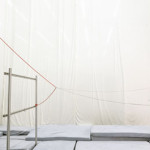By Kristoffer Edlund
FAA Streamlines UAS COAs for Section 333 – 24 March 2015
As of last Tuesday, the FAA’s latest interim policy grants blanket approval to some commercial unmanned aerial system (UAS) operations under 200 feet. Previously, each application for a commercial UAS flight was reviewed individually under the guidelines of Section 333 Exemption process. Now, UAS operators already holding a Section 333 exemption are no longer required to reapply for future flights. This policy should help streamline applications for commercial UAS flights and put more craft in the air, allowing the FAA to gather data and develop more general policies regulating small unmanned aircraft.
Amazon Urges Faster FAA Approval of Drones – 24 March 2015
Despite the FAA granting Amazon permission to test its package delivery drones last week, the retail giant claims that the FAA is not moving fast enough. Claiming that the aircraft has become obsolete during the protracted approval process, Amazon has applied for another permit for a new drone in hopes that the process will be faster. lthough Amazon has not been granted a Section 333 Exemption as of this writing, Tuesday’s policy update could allow Amazon to obtain a blanket exemption for future drone testing pursuant to the restrictions of Section 333. While such an exemption would allow for Amazon to begin testing, the drone delivery program as proposed requires quadcopters to operate beyond the pilot’s line of sight and at elevations beyond the current flight ceiling.
Folding In and Out: Passive Morphing in Flapping Wings – 25 March 2015
Earlier this week, research published in Bioinspiration and Biomimetics demonstrated a compliant, underactuated wing design for ornithopters. Instead of directly deploying the wing with an actuator, the Stanford University design uses centrifugal acceleration for deployment. Such a design has several advantages, notably the ability to withstand collisions with solid objects. In robotics and engineering, passive or underactuated systems are desirable for their survivability and easy control. Underactuated designs by convention are not fully constrained, and are able to passively react to their surroundings without control input. The passive unfolding mechanism used in the Stanford wing design allows the structure to deform against obstacle, bending and recovering from a crash instead of simply breaking.
Facebook Successfully Tests Laser In UK Skies – 27 March 2015
As part of their effort to provide internet access to customers across the world, Facebook has begun testing of solar powered drones equipped with free-space optical communication technology. Compared to conventional alternatives including fiber optics, lasers working through the air (instead of an optical cable) requires less permanent infrastructure to be installed, potentially reducing the time and capital investment to supply high speed internet connections in new markets. The Facebook drones have a wingspan comparable to a Boeing 737 and are designed for long endurance flights, able to fly at altitudes over 60,000 feet for months.


